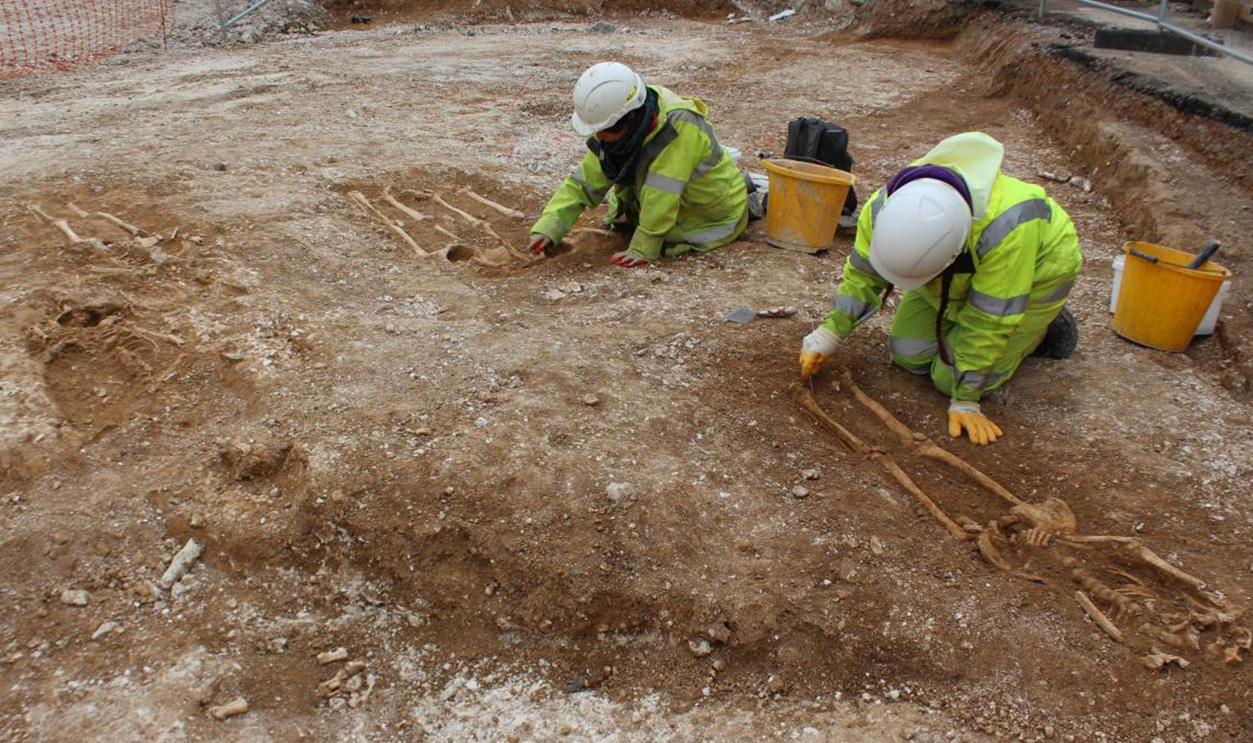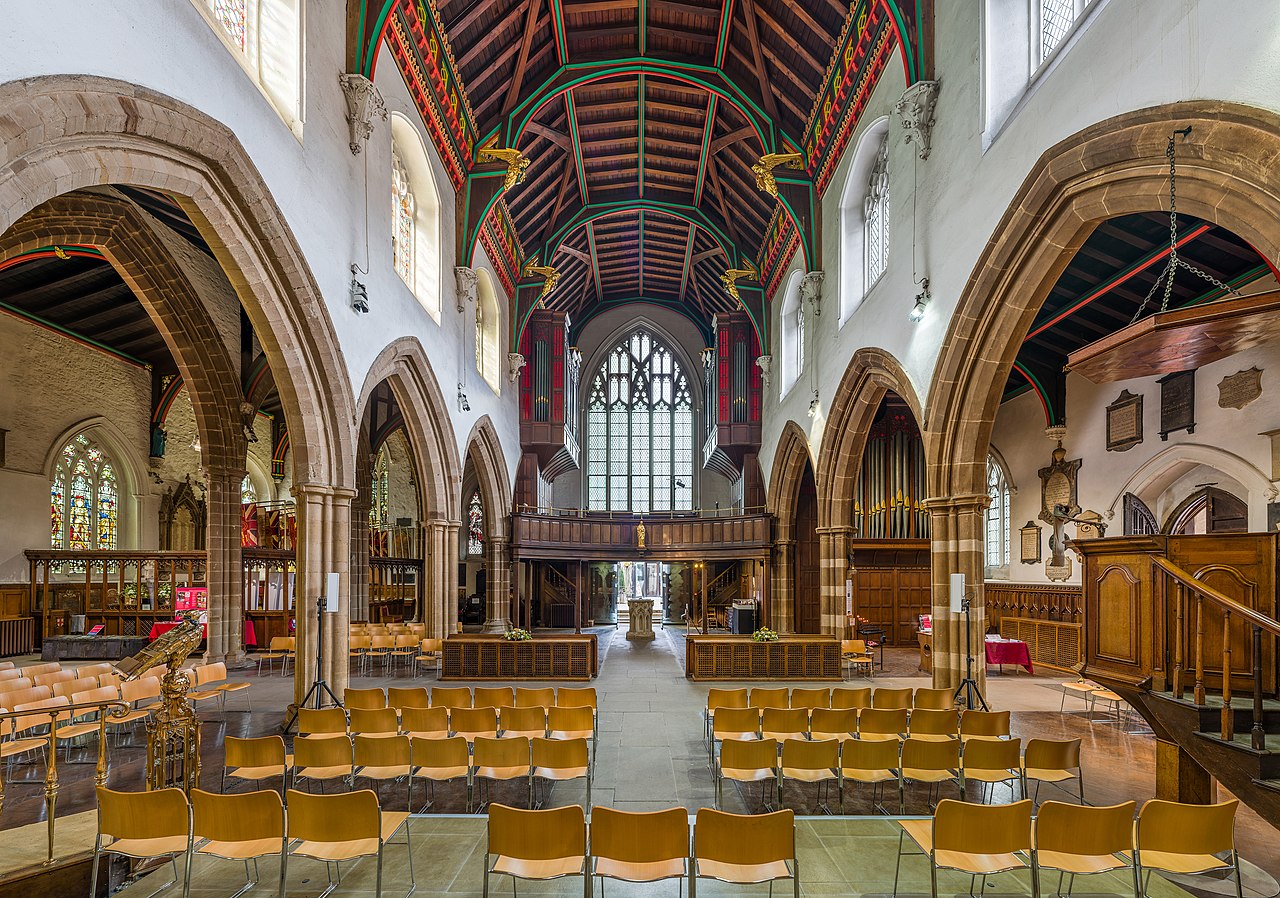How Did They Get There?
Over 120 bodies were recently unearthed in a garden outside a small British church in the city of Leicester, England. Now referred to as "Leicester's Lost," scientists are eager to find out what happened to these people, whose deaths showed no signs of foul play.

Leicester's History With Archaeology
The city of Leicester has long been an archaeological hotspot. In 2012, the remains of King Richard III (the last Plantagenet King), who died in 1485 at the Battle of Bosworth during the War Of The Roses, were discovered underneath a car park in Leicester.

The Find
In mid-November last year, researchers unearthed a vertical tomb encasing 123 bodies near Leicester Cathedral, a three-minute walk from where Richard III's body now lies.

How Did They Find Them?
In 2023, Leicester Cathedral built a Heritage Garden after a tenfold increase in visitors due to the discovery of King Richard III's body. This meant excavating beneath the existing grounds and conducting an archaeological survey.
The Archaeological Survey Turned Up 123 Bodies
During their surveying, Mathew Morris, Project Officer at Leicester University's archaeology department, uncovered 123 bodies of men, women, and children.
They All Died Within A Short Period
Because of the stacking of the bodies in a hurried fashion—with no gravestones and the fact that men, women, and children were all buried one on top of the other—scientists believe they all died within a short space of time.
Cause Of Death: Unknown
One of the biggest mysteries is that all 123 bodies showed no signs of foul play. This had led to rife speculation about what possibly could have resulted in 123 people being buried in a shaft-like, unmarked grave.
Did They Starve?
One possible reason for there being no evidence of violence is that these people starved. Famine and starvation were among the leading causes of death in Britons in the 12th century. It's possible that these people starved to death, but scientists are betting on another theory...
Pestilence
While the Black Death would sweep through Europe a century before these people died, other pestilences, such as the Great Bovine Pestilence, might have contributed to their deaths.
Anglo-Saxon Chronicles Confirm Pestilence Presence In 12th-Century England
Ancient texts from the Anglo-Saxons confirm that England was plagued by pestilence during the 12th century, making this the most likely cause of their demise.
Successive Cartloads Of Bodies
Researcher Morris and his team speculate that "successive cartloads of bodies were put into these shafts in three deposits, one load at a time".
5% Of The Town's Population
Population sizes were minuscule in the 14th century, so the loss of approximately 120 people probably represented about 5% of the town's population.
Over 1,000 Bodies From Eight Centuries
The grounds of the Cathedral of Leicester have been the site of many discoveries, including over 1,000 bodies from eight centuries—from the 19th to the 11th century.
An Unusual Occurrence
Morris describes the most recent discovery of bodies as unusual: "It's a continuous sequence of 850 years of burials from a single population in a single place. You don't get that very often".
Beneath The Bodies: More Archaeology
When exhumed, the Morris team continued to dig, uncovering more archaeological wonders, including evidence of Anglo-Saxon dwellings and a shrine dating back to Roman times.
Dumped In The Street
Given that none of the bodies were found with clothing, jewelry, brooches, or buckles, they were likely dumped in the street and collected from the roadside, just as had happened during the Black Death.
Wrapped In A Shroud
Despite being dumped in the street, many of the bodies were wrapped in individual shrouds, consistent with practices of a mass burial, with at least some care for the bodies of the departed.
The Only One Of Its Kind
This type of pit burial in a narrow stack is the only kind in the UK. Despite these remains bearing a resemblance to the Black Death, such bodies would have been burned rather than buried, say the experts. The mystery surrounding the deaths of over 120 people continues.
Other Recent Archaeological Finds In The UK
While the mystery and mystique around what killed 123 people took center stage late last year, it's not the only significant archaeological find in Britain in recent months.
200 Giant Dinosaur Footprints
Last year, a man working in a quarry in Oxfordshire, England, noticed something strange while digging with his front-end loader—what appeared to be dinosaur footprints. Worker Gary Johnson said, "I thought I was the first to see them. It was a bit surreal". What Gary had discovered was one of 200 giant dinosaur footprints.
More Than 100 Scientists Descend On The Quarry
Last summer, more than 100 scientists, researchers, and students descended on the quarry and began to dig, uncovering five different trackways of dinosaur prints.
Sauropods And Megalosaurus
While most of the tracks came from Sauropods—herbivores that walked on four legs—one particular set came from a Megalosaurus, a huge carnivore roughly 20 to 30 feet long.
Efforts Turn To Preservation
After the archaeological dig was completed, Natural England and the quarry owners, Smiths Bletchington, turned their attention to preserving the site. It's the largest dinosaur collection ever uncovered in the UK and is worth preserving.
What's Next For "Leicester's Lost"?
As scientists continue excavating clues as to what happened to the 123 bodies found, it will likely take some time before we have a full picture, but their cause of death—and why they were all buried together in such a fashion—maybe one of the incredible mysteries of history.